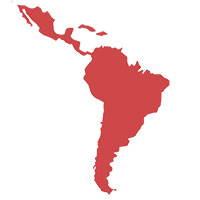COP20: A Footprint
Malcolm J | December 10, 2014.
Holding a UN conference is no simple feat. Negotiators fly from all around the world, stay in hotels all over the city, take various forms of transportation to and from the venue, and consume a significant amount of food. Limiting carbon emissions is the ultimate goal of the negotiations, a footprint made slightly bigger by those attending the conference.
So how much hot air are these bureaucrats really creating? According to Project Developer Forum, a group campaigning on behalf of green energy developers, the 9,000 delegates from 190 countries attending the UN climate conference in Lima will generate almost 29,000 tonnes of ‘CO2e’, or carbon dioxide equivalent. This estimate is based solely on emissions from flights and hotels. Add 62 round trips of the buses that are carrying negotiators to and from the venue; approximately 203 tonnes of CO2e, and the emissions of the average diet, we start to gain a clear picture of the environmental impact.
Emissions of carbon dioxide at COP20 are roughly equivalent to the emissions produced by the entire Pacific island state of Kiribati in six months. Whilst Kiribati has a population of just 100,000, the effects of greenhouse gases could put the entire island state at risk.
In comparison, the carbon footprint of the 2010 Vancouver Winter Games was an estimated 118,000 tonnes of direct carbon emissions, that is, emissions directly attributable to the Olympics including venue construction, facility heating, and athlete travel; in addition to an estimated 150,000 tonnes of ‘indirect’ emissions, which were largely attributable to flights and accommodation for spectators, media, corporate sponsors and their partners.
So, is the UNFCCC process just an opportunity for environmentalist to turn a blind eye to their own impact while criticising everyone else? Not quite. Despite the perceived deadlock at the negotiation table, the successful adoption of a universally accepted agreement would dwarf the marginal emissions of delegates.
In 2013, global carbon emissions were around 36 million tonnes of CO2e, which means the COP20 meeting accounts for a mere 0.00083% of global emissions. Agreements have resulted in reductions for a number of countries that may not have occurred otherwise, even as emissions hit a new high for 2014.
Opponents of the climate change agenda tend to focus on the minute negative side effects of these events whilst marginalising the bigger picture. Some cry hypocrisy. In reality, offsetting emissions caused by flights is becoming more of a common practice for the environmentally-minded traveller to ensure a smaller footprint.
Accomplishing the goal set out at the start of the “Green Blob” — a term used by climate-sceptic Benny Peiser of the Global Warming Policy Foundation to describe the Lima conference — may be challenging. However, the reality of climate change is too pressing to ignore. When island states plea for the complete cessation of carbon emissions as soon as possible, their survival is actually at stake. Negotiators know this, and if traveling to Lima is what it takes to reach an agreement, then that’s a carbon sacrifice that many here are willing to make.
The Verb offsets its organisational carbon emissions with Sandbag, an organisation that purchases and removes carbon credits from the EU’s emissions trading scheme.













comment